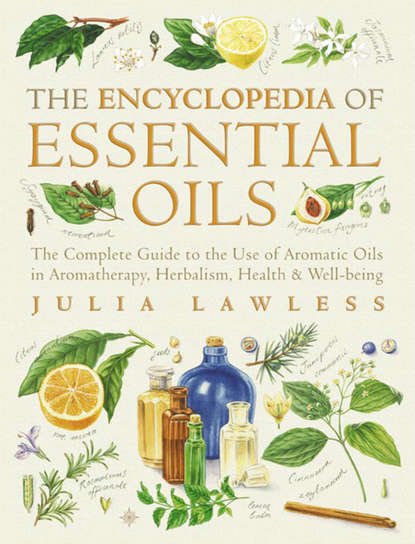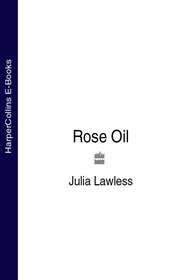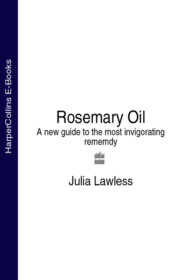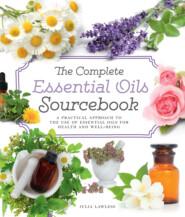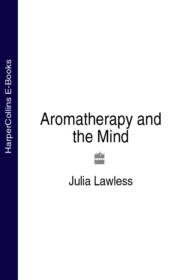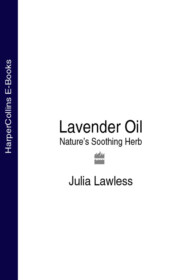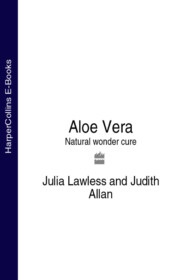По всем вопросам обращайтесь на: info@litportal.ru
(©) 2003-2024.
✖
Encyclopedia of Essential Oils: The complete guide to the use of aromatic oils in aromatherapy, herbalism, health and well-being.
Настройки чтения
Размер шрифта
Высота строк
Поля
ACTIONS Antispasmodic, carminative, depurative, diaphoretic, digestive, diuretic, emmenagogue, expectorant, febrifuge, nervine, stimulant, stomachic, tonic. Reported to have bactericidal and fungicidal properties.
EXTRACTION Essential oil produced by steam distillation from the 1. roots and rhizomes, and, 2. fruit or seed. An absolute is also produced on a small scale, from the roots.
CHARACTERISTICS 1. A colourless or pale yellow oil which turns yellowy-brown with age, with a rich herbaceous-earthy bodynote. 2. The seed oil is a colourless liquid with a fresher, spicy top note. It blends well with patchouli, opopanax, costus, clary sage, oakmoss, vetiver and with citrus oils.
PRINCIPAL CONSTITUENTS Root and seed oil contain phellandrene, pinene, limonene, linalol and borneol; rich in coumarins including osthol, angelicin, bergapten and imperatorin; also contains plant acids.
SAFETY DATA Both root and seed oil are non toxic and non-irritant. The root oil (not the seed oil) is phototoxic, probably due to higher levels of bergapten. Not to be used during pregnancy or by diabetics.
AROMATHERAPY/HOME USE
Skin Care: Dull and congested skin, irritated conditions, psoriasis.
Circulation Muscles And Joints: Accumulation of toxins, arthritis, gout, rheumatism, water retention.
Respiratory System: Bronchitis, coughs.
Digestive System: Anaemia, anorexia, flatulence, indigestion.
Nervous System: Fatigue, migraine, nervous tension and stress-related disorders.
Immune system: Colds.
OTHER USES Highly valued as a fragrance component in soaps, lotions and perfumes especially colognes, oriental and heavy chypres fragrances. It is employed in some cosmetics for its soothing effect on skin complaints. Used extensively as a flavouring agent in most food categories, and in alcoholic and soft drinks, especially liqueurs.
ANISE, STAR (#ulink_89570f91-e9f7-5b26-a2d3-2aad03a5695c)
Illicium verum
FAMILY Illiciaceae
SYNONYMS Chinese anise, illicium, Chinese star anise.
GENERAL DESCRIPTION Evergreen tree up to 12 metres high with a tall, slender white trunk. It bears fruit which consist of five to thirteen seed-bearing follicles attached to a central axis in the shape of a star.
DISTRIBUTION Native to south east China, also Vietnam, India and Japan. Mainly produced in China.
OTHER SPECIES Several other related species, e.g. Japanese star anise which is highly poisonous!
HERBAL/FOLK TRADITION Used in Chinese medicine for over 1300 years for its stimulating effect on the digestive system and for respiratory disorders such as bronchitis and unproductive coughs. In the East generally, it is used as a remedy for colic and rheumatism, and often chewed after meals to sweeten the breath and promote digestion. A common oriental domestic spice.
Star Anise
ACTIONS Antiseptic, carminative, expectorant, insect repellent, stimulant.
EXTRACTION Essential oil by steam distillation from the fruits, fresh or partially dried. An oil is also produced from the leaves in small quantities.
CHARACTERISTICS A pale yellow liquid with a warm, spicy, extremely sweet, liquorice like scent. It blends well with rose, lavender, orange, pine and other spice oils, and has excellent masking properties.
PRINCIPAL CONSTITUENTS Trans-anethole (80–90 per cent).
SAFETY DATA Despite the anethole content, it does not appear to be a dermal irritant, unlike aniseed. In large doses it is narcotic and slows down the circulation; it can lead to cerebral disorders. Use in moderation only.
AROMATHERAPY/HOME USE
Circulation Muscles And Joints: Muscular aches and pains, rheumatism.
Respiratory System: Bronchitis, coughs.
Digestive System: Colic, cramp, flatulence, indigestion.
Immune system: Colds.
OTHER USES By the pharmaceutical industry in cough mixtures, lozenges, etc. and to mask undesirable odours and flavours in drugs. As a fragrance component in soaps, toothpaste and detergents as well as cosmetics and perfumes. Widely used for flavouring food, especially confectionery, alcoholic and soft drinks.
ANISEED (#ulink_276b64f0-99b4-5220-a25c-6a8dea3d8342)
Pimpinella anisum
FAMILY Apiaceae (Umbelliferae)
SYNONYMSAnisum officinalis, A. vulgare, anise, sweet cumin.
GENERAL DESCRIPTION An annual herb, less than a metre high, with delicate leaves and white flowers.
DISTRIBUTION Native to Greece and Egypt, now widely cultivated mainly in India and China and to a lesser extent in Mexico and Spain.
OTHER SPECIES There are several different chemotypes of aniseed according to the country of origin. Not to be confused with star anise, which belongs to a different family altogether.
HERBAL/FOLK TRADITION Widely used as a domestic spice. The volatile oil content provides the basis for its medicinal applications: dry irritable coughs, bronchitis and whooping cough. The seed can be used in smoking mixtures. Aniseed tea is used for infant catarrh, also flatulence, colic and griping pains, also for painful periods and to promote breast milk. In Turkey a popular alcoholic drink, raki, is made from the seed.
ACTIONS Antiseptic, antispasmodic, carminative, diuretic, expectorant, galactagogue, stimulant, stomachic.
EXTRACTION Essential oil by steam distillation from the seeds.
CHARACTERISTICS Colourless to pale yellow liquid with a warm, spicy-sweet characteristic scent. Like star anise, it is a good masking agent.
PRINCIPAL CONSTITUENTS Trans-anethole (75–90 per cent).
SAFETY DATA Its major component, anethole, is known to cause dermatitis in some individuals – avoid in allergic and inflammatory skin conditions. In large doses it is narcotic and slows down the circulation; can lead to cerebral disorders. Use in moderation only.
AROMATHERAPY/HOME USESee star anise (#ulink_168f2553-27c3-57d2-8508-34e7cff68776).
OTHER USES By the pharmaceutical industry in cough mixtures and lozenges and to mask undesirable flavours in drugs. Also used in dentifrices and as a fragrance component in soaps, toothpaste, detergents, cosmetics and perfumes, mostly of the industrial type. Employed in all major food categories.
ARNICA (#ulink_44ccaf8f-83ff-5216-a377-807839b0df26)
Arnica montana





